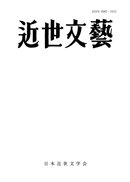113 巻
選択された号の論文の5件中1~5を表示しています
- |<
- <
- 1
- >
- >|
-
2021 年 113 巻 p. 1-15
発行日: 2021年
公開日: 2021/07/31
PDF形式でダウンロード (1246K) -
2021 年 113 巻 p. 17-32
発行日: 2021年
公開日: 2021/07/31
PDF形式でダウンロード (1232K) -
2021 年 113 巻 p. 33-47
発行日: 2021年
公開日: 2021/07/31
PDF形式でダウンロード (1276K) -
2021 年 113 巻 p. 49-62
発行日: 2021年
公開日: 2021/07/31
PDF形式でダウンロード (1280K) -
2021 年 113 巻 p. 63-79
発行日: 2021年
公開日: 2021/07/31
PDF形式でダウンロード (1297K)
- |<
- <
- 1
- >
- >|
